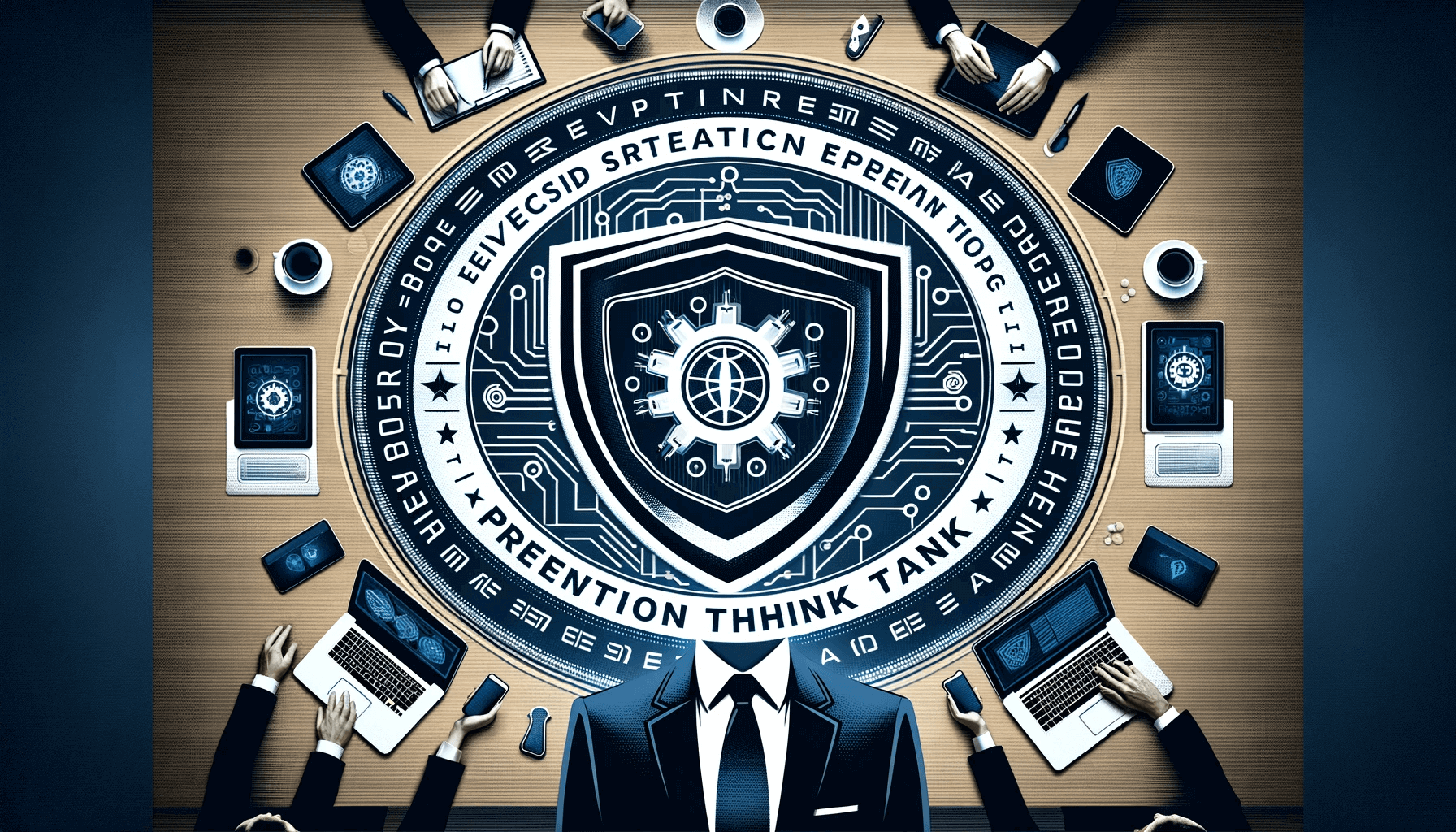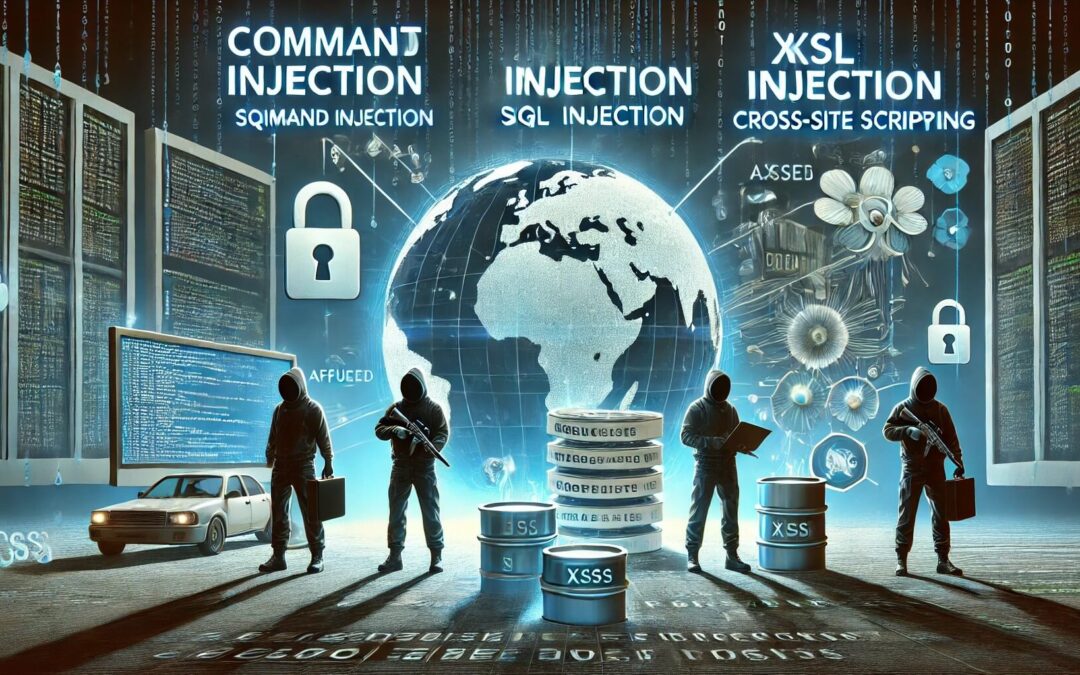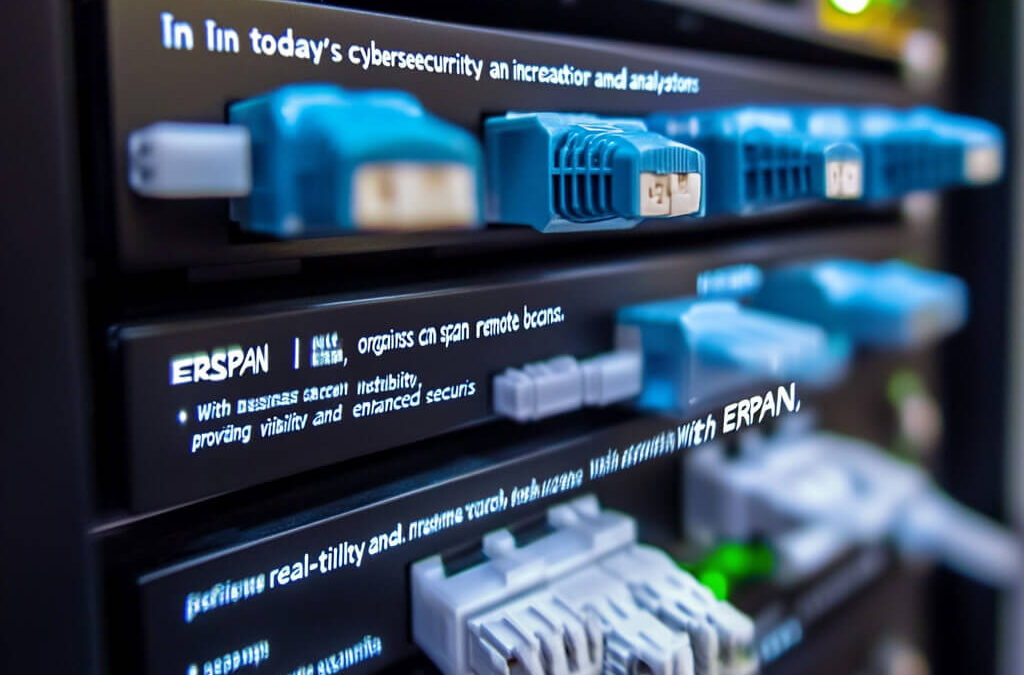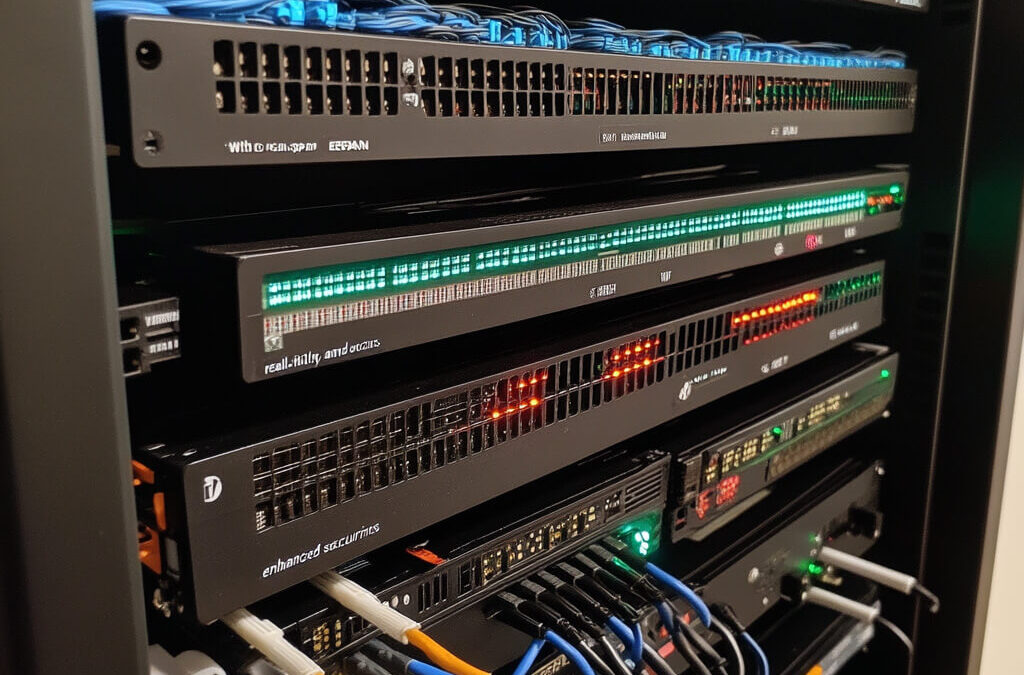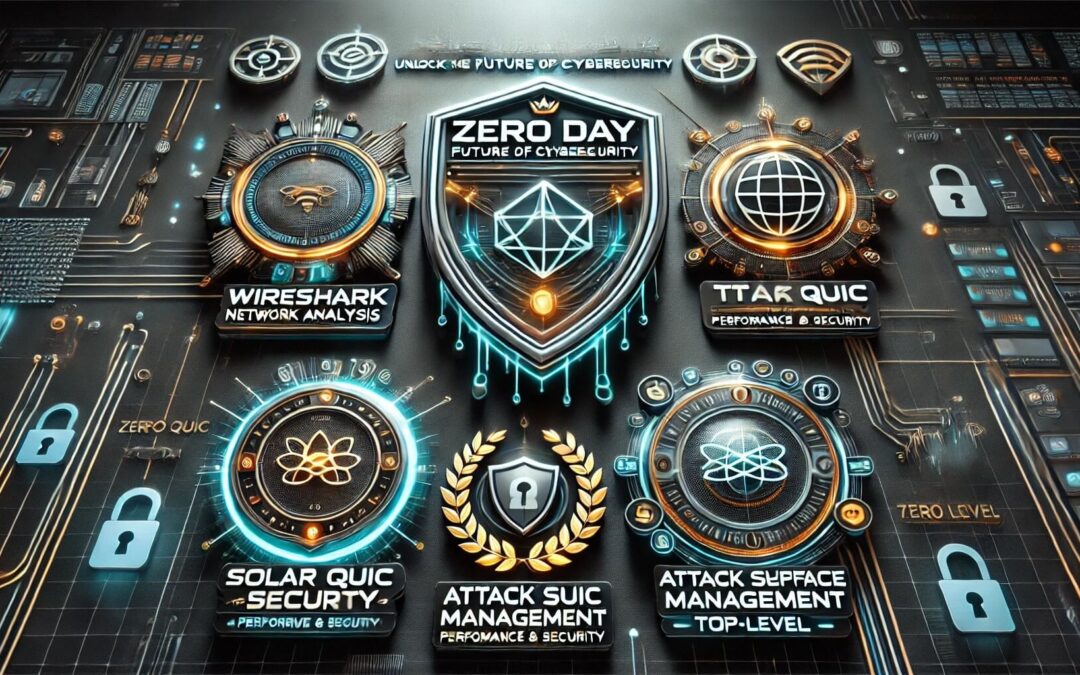In a time where digital threats loom larger than ever, the need for cutting-edge cybersecurity strategies is critical. The watershed moment in this quest for cyber-safety is here with us. We proudly launch the Zero-Day Think Tank community.
This dedicated platform raises awareness about zero-day threats and empowers you with the tools and knowledge to combat them effectively.
What makes Zero-Day Think Tank Unique?
Zero-day threats are the silent assassins – elusive, unpredictable, and devastating. These threats can infiltrate networks, paralyzing entire systems before IT experts even realize they’re under attack. Our blog makes a concerted call to action against these unseen dangers. Among other benefits you’ll get! Mastering Preparedness: Your Pathway to Cyber Resilience
Our blog is an extension of our comprehensive cybersecurity course, designed for professionals like you who are determined to stay ahead in the cybersecurity game. Here, we conduct an in-depth analysis of zero-day threats, equipping you with the insights and strategies to identify vulnerabilities and thwart attacks before they strike. Exploring Top Zero-Day Threat Prevention Strategies
Through the Zero-Day Think Tank, we inform and, at the same time, transform your cybersecurity experience. Our content is curated by leading cybersecurity experts, focusing on the most effective prevention strategies in the industry.
We cover everything from advanced technology solutions to best practices in network security, ensuring you’re always informed and prepared. Stay Tuned, Stay Protected!
Prepare to dive into a world where cybersecurity is demystified, and empowerment against zero-day threats is just a click away. Welcome to the Zero-Day Think Tank community – where every post is a step towards a safer digital tomorrow.
Your Shield Against the Unseen is Here. Welcome Aboard and learn the following!
Regular Updates for Software, Systems, and Applications
Cybersecurity professionals are the most formidable line of defense against the elusive and dangerous zero-day threats. The foundation of organizational cyber safety lies in regularly updating software, systems, and applications. These updates are pivotal in fortifying defenses against zero-day threats. Our blog guides you to master the art of identifying, acquiring, testing, and consistently installing these updates, elevating your role in cybersecurity to that of a vigilant guardian. As a cybersecurity professional enrolling in our prevention strategies course will transform you into a formidable leader. Your role extends beyond merely noting updates to include a strategic focus on prioritizing updates based on system vulnerabilities and ensuring regularity. Our blog digs into the nuances of testing updates in controlled environments, setting up structured deployment strategies, and maintaining constant vigilance over systems to swiftly identify and address emerging issues. At the heart of preventing zero-day attacks lies vigilance. As you’ll learn, this is an unyielding attention to the pulse of your organization’s cyber health. Coupled with this is the strategic use of automation tools for deploying updates, thus narrowing the window of vulnerability. An often-overlooked aspect of cybersecurity is the relationship with software developers. Our blog emphasizes the importance of these connections, as they can be a rich source of critical update information and swift resolution mechanisms. The undeniable reality of cyber threats looms over every organization. But with our course, you learn to proactively combat zero-day threats through regular updates, strategic testing, and informed vigilance.
Segment Networks to Limit the Impact of a Potential Breach
In the relentless fight against zero-day attacks, network segmentation is a critical defense strategy for organizations. We excited to spotlight this technique as a vital measure to mitigate the impact of potential breaches.For cybersecurity professionals like you, engaging with our course means mastering the art of network segmentation. This approach is about creating a robust architecture where the attack surface is minimized and the impact of breaches is contained.
We’ll teach you how you can effectively isolate critical systems from less sensitive ones, thereby reducing the vulnerability of your network.Our course on prevention strategies guides you through the nuances of logical and physical network segmentation. The key lies in identifying which systems harbor sensitive data and warrant heightened protection. Once identified, implementing stringent access controls is crucial to regulate traffic for each segment.By restricting access to specific network segments, you safeguard sensitive information and ensure that isolation and containment are swift and effective in the event of an attack. As a cybersecurity professional trained through our course, your role is instrumental. You’ll be taught how to deploy authentication methods to verify identities and permissions. Firewalls play a critical role here, serving as gatekeepers that enforce security rules for network traffic.
Opt for Advanced Security Solutions
The Zero-Day Think Tank community is focused on advanced security solutions – a pivotal strategy for cybersecurity professionals. This approach employs sophisticated technologies for ironclad network protection. Our blog highlights how these solutions leverage state-of-the-art technologies to protect networks, sensitive data, and systems comprehensively.
A prime example of such a security solution is the Next-Generation Firewall (NGFW). Our course equips cybersecurity professionals like you with the knowledge to deploy these advanced firewalls. NGFWs firewalls have application-level filtering, deep packet inspection, and threat intelligence integration capabilities. This makes them exceptionally effective in swiftly detecting and thwarting modern threats, including the elusive zero-day attacks.
By training through our course, you’re not just learning but becoming a master in using sophisticated tools essential in today’s cybersecurity battle. The Zero-Day Think Tank community is dedicated to guiding you through these complexities, ensuring you’re always one step ahead in the cyber defense game.
Our zero-day attacks prevention strategies course trains you in advanced solutions to detect real-time threats. For instance, you’ll learn to utilize Intrusion Detection Systems (IDS) and Intrusion Prevention Systems (IPS). The goal is to monitor traffic within a network for suspicious patterns and block threats in real-time. Another option worth its weight in gold when it comes to advanced solutions is Endpoint Detection and Response (EDR). Such solutions monitor and respond to threats on individual endpoints by providing real-time visibility into different activities. As a result, it’s possible to carry out rapid responses to potential threats.
Next, let’s delve into Security Information and Event Management (SIEM), a pivotal platform in cybersecurity. SIEM systems are designed to aggregate and analyze log data from various sources. This functionality is crucial for promptly identifying security incidents, detecting anomalies, and providing centralized monitoring and reporting. Additionally, our zero-day prevention strategies course offers in-depth learning about machine learning and behavioral analytics.
These advanced technologies utilize machine learning algorithms to scrutinize data and pinpoint patterns in user behavior. This approach is particularly effective within network environments for detecting issues or potential threats that might slip past traditional rule-based systems.
Employ Application Whitelisting to Systems
Networks require constant vigilance, and strategies like whitelisting systems play a crucial role, as you’ll learn in our course. Application whitelisting involves specifically controlling which applications are allowed to run on a network. This strategy operates by creating a list of approved applications that are permitted to run, effectively denying access to all others. The primary advantage of whitelisting lies in its ability to block the execution of unapproved software, thereby mitigating risks. Even in the face of unknown threats, such threats are unable to execute on a network without prior authorization. However, this strategy is not without its challenges.
One significant challenge is the need for continual updates to the whitelist to include newly approved software. Neglecting these updates can result in essential software being barred from execution. Additionally, there is a delay factor for users awaiting approval to run new applications on the network. If approval processes are slow, it can lead to operational delays, impacting organizational productivity. While whitelisting is an effective strategy, it demands meticulous planning and configuration for setup and management. Nevertheless, it remains a valuable method for protecting networks, providing strict control over software execution.
Conduct Frequent Security Assessments
A robust security strategy is essential in combating zero-day attacks, highlighting the importance of our course for cybersecurity professionals. This course focuses on mastering frequent security assessments within organizations, a critical element in a comprehensive security strategy.
These assessments aim to carry out thorough evaluations, tests, and reviews across various systems, applications, and networks. Regular inspections are vital in uncovering vulnerabilities that attackers could otherwise exploit.
Identifying network, system, or application weaknesses is just the first step. Prompt mitigation is crucial. By addressing emerging issues swiftly, you maintain compliance with industry standards and reduce the overall threats and risks faced by the organization.
There are four types of security assessments to consider as a cybersecurity professional working on zero-day attack prevention strategies that you learn from our course:
1. Security Audits and Compliance Checks
2. Vulnerability Assessments
3. Code Reviews and Application Security Assessments
4. Pen Testing
Conducting frequent security assessments comes with challenges, such as potential disruptions to normal business operations. Security assessments often necessitate temporarily interrupting the function of networks, systems, and applications.
Moreover, this resource-intensive strategy needs careful planning and a qualified workforce. Despite these challenges, the benefits of frequent security assessments are clear. They enable organizations to detect and mitigate threats and prevent the exploitation of vulnerabilities.
Engage with Cybersecurity Communities
Engaging in cybersecurity communities and forums is a crucial prevention strategy in the constantly evolving landscape of zero-day threats. Operating in isolation leaves one vulnerable, underscoring the importance of these communities and forums in advancing security measures. Cybersecurity communities serve as a rich source of information, vital for implementing effective security measures in organizations. These communities offer opportunities to discuss, learn, and stay informed about emerging threats, trends, and prevention strategies.
Many online communities and forums are recommended since cybersecurity professionals can leverage on these platforms to connect with other professionals and join relevant groups. The primary role of cybersecurity communities is to facilitate the sharing of threat intelligence and solutions. With organizations facing many threats, attacks, and vulnerabilities, collaboration on projects and initiatives is vital to advancing preventive measures. It’s also an excellent opportunity for networking, building professional relationships, and collaborating with peers. Plus, being part of these communities ensures access to real-time updates on emerging threats, tools, and industry trends.
Enroll in our Zero-Day Attack Prevention Strategies Course today and solidify your position as a cybersecurity expert. Your journey towards becoming a master of cyber defense starts here!
